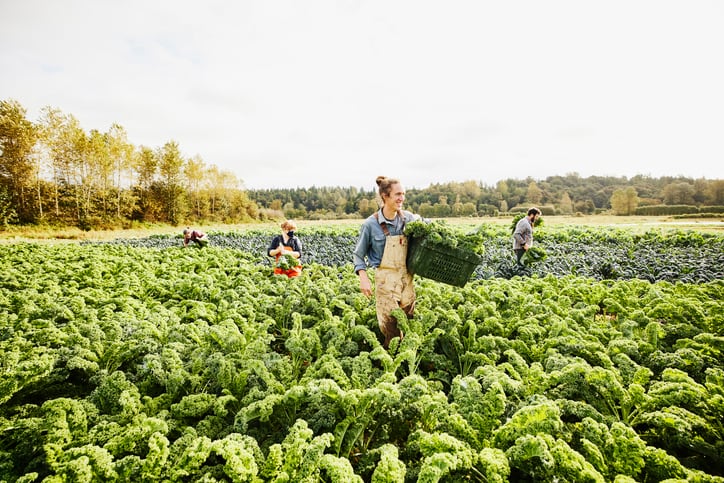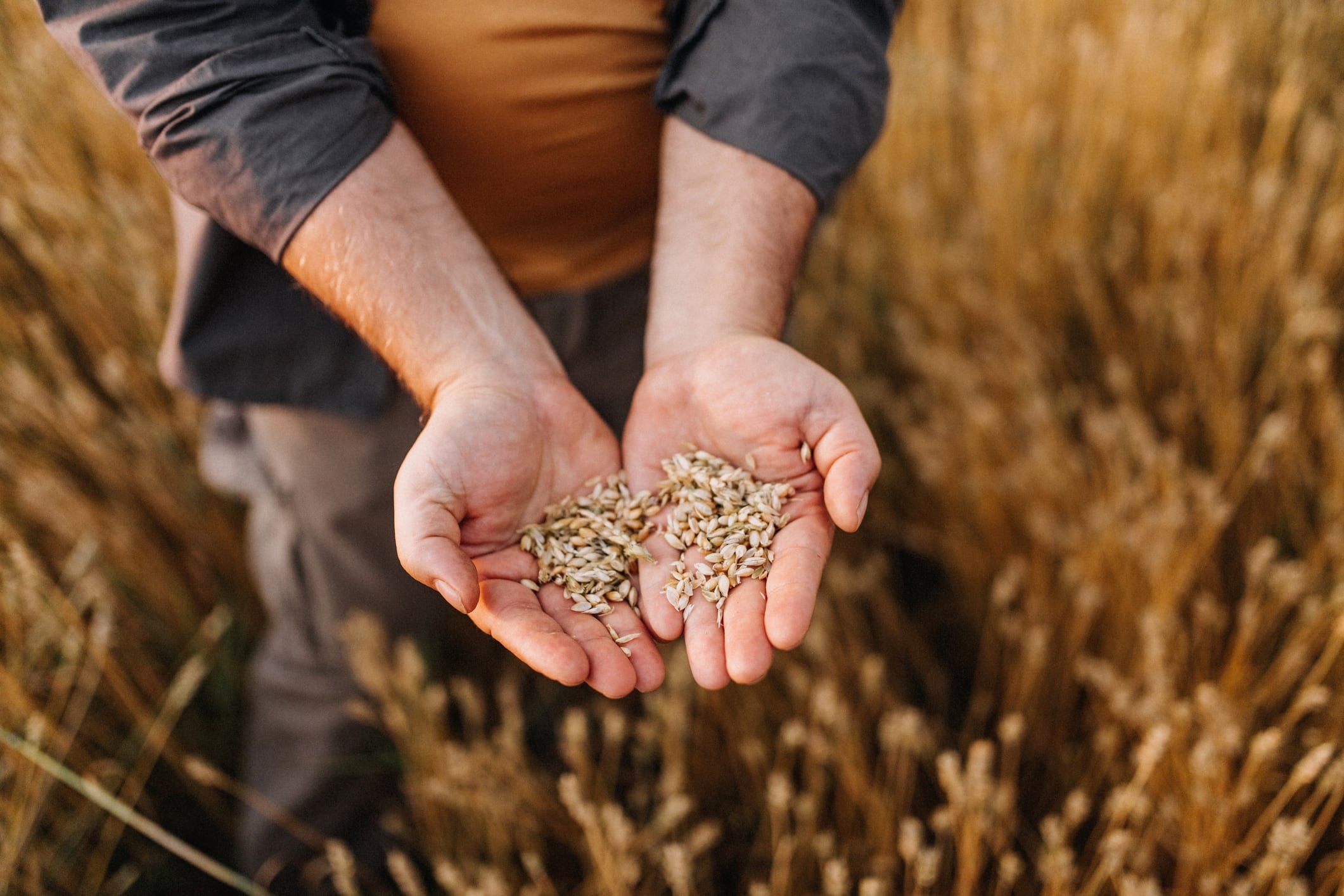The good news for advocates of regenerative agriculture is consumer awareness of the practice and demand for foods and beverages produced using this approach is on the rise – the bad news is the current supply of regeneratively produced ingredients and products is woefully insufficient.
According to a recent consumer survey commissioned by the regenerative agriculture certifier Regenified, awareness of regenerative agriculture has grown steadily in the past six years with nearly half of respondents noting they became aware of regenerative agriculture within the last year – signaling a surge in awareness and “a shift into a high-growth phase” for the movement.
But to fully seize this potential and reap the full environmental and business benefits of regenerative agriculture, the survey indicates more consumer education and increased brand and retailer engagement in the emerging market are essential to further build supply and demand.
In this episode of FoodNavigator-USA’s Soup-To-Nuts Podcast, Regenified Chief Marketing Officer Kristine Root shares who is most interested in regenerative agriculture, what is driving their engagement in the sector, and the extent to which they will pay more for regeneratively produced foods and beverages. She also shines a light on where there are knowledge gaps that limit shopper participation in the market, and how brands and retailers can better meet this growing demand by converting their supply chains to regeneratively sourced ingredients.
Explore past episodes of Soup-To-Nuts podcast
Never miss an episode of FoodNavigator-USA’s Soup-To-Nuts podcast, or our recently launched Founders' Fundamentals podcast -- subscribe today.
Catch up on past episodes of Soup-To-Nuts:
Danone seeks to rekindle consumers’ love of plant-based milk – Sales of plant-based milk have slowed in the past year, but Silk and So Delicious maker Danone still sees significant potential by focusing on fun in addition to function
What attracts consumers to whole grains and where is there room for innovation? – As the Whole Grain Stamp celebrates its 20th anniversary, Oldways Whole Grain Council considers where there is room for innovation and how to overcome barriers blocking product development and consumption of whole grains
Better-for-you marketing claims raise red flags: Could enforcement crackdown loom? - An advertising watchdog lists ‘better-for-you’ claims as a potential enforcement area for 2025 amid concerns that marketers may not be able to support implied health claims
2025 trendspotting: Exhausted consumers demand lower prices, healthy food, treats - Most US consumers are exhausted after a year of uncertainty marked by ongoing inflation and political turmoil, and industry insiders predict as they enter the new year many will seek relief – physical, emotional and financial – from the foods and beverages they choose.
Who buys regenerative products?
Regenerative agriculture is a complex, multi-tiered system that is difficult to explain and understand – especially as it does not have a single, legal definition. And yet, according to Regenified’s research, 68% consumers who shop based on values beyond taste and price are aware of regenerative agriculture and 65% of these consumers expressed a strong interest in purchasing regenerative products after learning more.
Of these, a subset are what Root calls “super champions,” who not only want to support regenerative agriculture through their own purchases but they also are willing to “shout from the top of the roofs” all the reasons why other people should also buy regenerative agriculture.
Together, these consumers make up what Root dubbed “the emerging regenerative market,” which she adds is growing and willing to pay a premium for regeneratively produced products – making them a highly sought after consumer group for most food and beverage manufacturers and retailers.
Based on Regenified’s two-part study including 850 US consumers divided into two groups – “general consumers” or “values-based shoppers” – Root said most consumers want “quality” food, including 68% of the general consumers and 86% of the value-based shoppers.
Why do consumers want regenerative products?
Consumer interest in regenerative farming and ingredients grown using these methods is rooted in their growing desire for healthier food.
According to the survey commissioned by Regenified, the majority of consumers most likely to buy regenerative agriculture products do so because they want nutrient-dense foods and correlate regenerative practices with healthier choices.
Root explains improved nutrient density is one of many cascading benefits of regenerative agriculture compared to conventional farming methods that begin with improving the health of the soil, which in turn can improve the healthful of the harvest. This ultimately boosts the financial health of farms and food manufacturers.
While Root acknowledged the science behind regenerative agriculture is complex and nuanced, she said the basic principle is not.
Regenerative agriculture is working in harmony with nature,” said Root. “It’s about building up life in the soil. And when you build up life in the soil, you start building life above the soil, and you get these rippling, compounding, cascading effects. So, if we are feeding soil with different types of plants that are exuding different types of root exudates into the ground, unlocking different nutrients that are cycling through this highway of fungal and bacterial colonies that are living in symbiotic relationships under the soil,” then there will be healthier plant matter and farm prosperity.
She added: “When all of that is happening, you get abundant plant matter. When you have abundant plant matter, you have good harvest. When you have good harvest, you have prosperity on a farm, and profitability.”
Natural Products Expo West Preview
This story is part of a special collection of articles previewing what to expect at Natural Products Expo West, including what booths and education sessions to check out and what trends to watch. The collection highlights new products and branding as well as strategic advice for long-term success. We also explore evolving market dynamics to help you make the most of your time in Anaheim, Calif.
Check out the full collection.
To receive future special editions via email, register for free for FoodNavigator-USA's newsletters. Find out more by clicking the yellow 'register' button at the top of our homepage or by visiting https://www.foodnavigator-usa.com/Info/Why-register/.
Consumers will pay more for regenerative
Most consumers do not understand the ins and outs of regenerative agriculture, but they recognize that it creates a more valuable end product, and for that many consumers are willing to pay more.
According to the survey, 89% of the consumers in the ‘emerging regenerative market’ will pay a premium for regenerative products.
But they also want assurance that what they are paying more for is actually delivering on its promise – which is why 72% of values-based shoppers and 92% of the emerging regenerative market say they place a high importance on certification when choosing products.
And this is where Regenified comes in. While Regenified is not the only regenerative agriculture certifier, Root says it is unique in that it was founded by farmers, soil scientists and researchers and it is practice- and outcomes-based.
Alleviate supply challenges
As more consumers learn about and look for regenerative agriculture products the current supply could quickly outstrip demand unless more farms transition – a process that will require help from food manufacturers and retailers.
According to the survey, limited availability of regenerative agriculture products is a challenge for 40% of values-based shoppers and 44% of the emerging regenerative market. Likewise, 89% of the emerging regenerative market will go out of their way to find regenerative products.
This reveals an untapped potential for brands and retailers to win new consumers by creating and stocking regenerative products.
To seize this potential, Root encourages stakeholders across the value chain to learn more about regenerative agriculture and to take at least one step to be a part of the change. It shares several action items for brands and retailers on its website.
Regenerative agriculture at Expo West
Natural Products Expo West offered a deep dive into the regenerative and organic markets with these sessions:
Scaling Organic & Regenerative Supply: What it takes to Transition Ingredients & Products – March 5 at 12 to 1 PT in Marriott, Grand Ballroom E
Growing Success at Retail: Who are Today’s Organic & Regenerative Shoppers? – March 5 at 1:30 to 2:30 PT in Marriott, Grand Ballroom E
What’s Next for Regenerative? Honoring the Past & Present for the Future – March 5 at 3 to 5 PT in Marriott, Grand Ballroom E
Inside Organic Workshop: Elevate, Educate, Communicate – What’s Your Organic Message? – March 7 at 11 to 12 PT in Marriott, Grand Ballroom F




